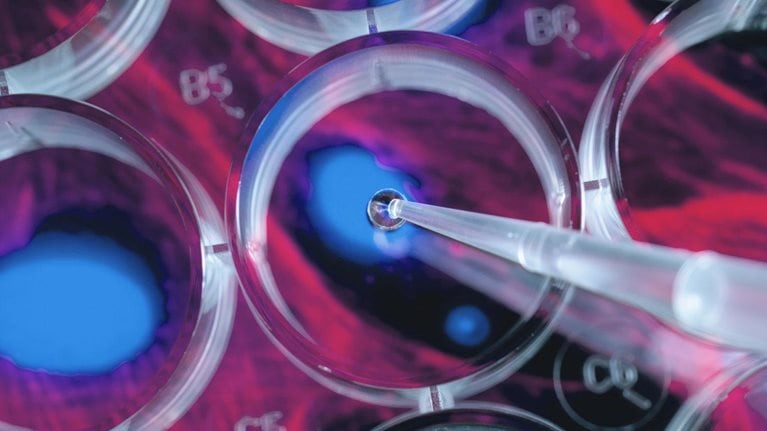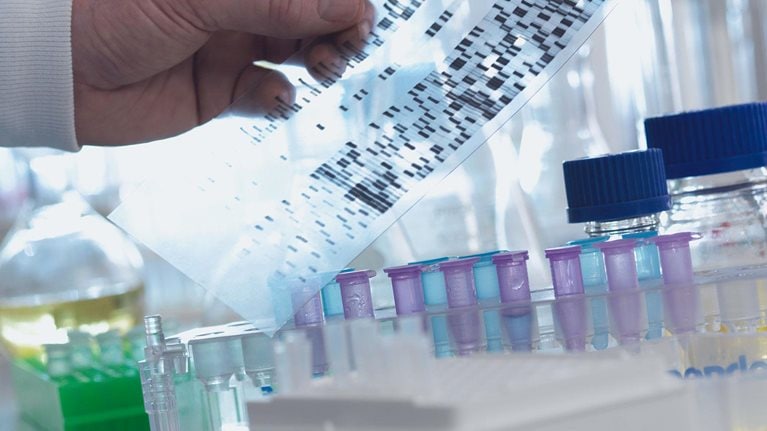Recent years have seen a steady acceleration in the number of cell and gene therapies (CGTs) on the market (Exhibit 1). More than 75 had been launched (including launches in individual markets, such as Japan, Russia, and South Korea) by the end of 2019. Many more are in development, offering the hope of revolutionary healthcare.
Foremost is the hope CGTs offer to patients suffering from serious, often rare, and previously unaddressed diseases. Of the 59 Phase III pipeline assets analyzed, 32 target at least one rare indication. Important too is the fact that some therapies will likely be curative, replacing lifelong treatment of chronic disease with the administration of a limited number of doses or even just one—a huge benefit to patients as well as overburdened healthcare systems. Novartis’s often-cited gene therapy Zolgensma, for example, has the potential to act as a single-dose cure for patients with spinal muscular atrophy.

Then there is the possibility that, as technology advances, development time and costs for new therapies will be slashed. Rather than starting with a clean-sheet development process for every new compound targeting a specific disease, technology platforms will be able to target many different diseases. Viral-vector platforms that target a range of diseases in gene therapy are already being developed.
Yet, despite such early promise, the extent to which scientific breakthroughs in CGT will translate into similar advances in European healthcare remains uncertain. The adoption of CGT in Europe faces the same challenges as elsewhere: technical issues, high costs, and concerns about long-term safety, for example. But there are also specific European factors that impede the development of a vibrant CGT sector on the continent, and that will need to be addressed to speed the acceptance of life-changing therapies (Exhibit 2).

The European CGT landscape
The unmet need for CGTs in Europe is significant. The estimated patient population for just four indications addressed by CGTs today is 385,000, roughly three times as large as the equivalent US cohort (Exhibit 3).1

European authorities are keen to support new treatments that target currently underserved disease areas. Hence, the European Medicines Agency (EMA) has granted orphan status to the majority of CGT drugs in development. And it has performed an accelerated assessment of several therapies, including two cell therapies for treating aggressive B-cell lymphomas—Novartis’s Kymriah and Gilead’s Yescarta—and one ex vivo gene therapy, Bluebird Bio’s Zynteglo, which treats the rare blood disorder beta-thalassemia (Exhibit 4). As Exhibit 5 shows, rapid assessments have reduced CGT approval timelines in Europe significantly, bringing them below the EU average (though still not below the US average).


Against this encouraging backdrop, however, the European CGT industry faces some specific challenges.2
Turning research strength into market strength
Europe is home to 16 of the top 50 global life science universities, which is why it is a world leader in CGT research.3 Between 2017 and 2019, the lead author of some 120,000 papers that appeared in CGT publications was affiliated with a European institution. Equivalent figures for US and Chinese papers were 72,000 and 100,000, respectively.4 And one of the joint winners of the Nobel Prize in Chemistry 2020 was Professor Emmanuelle Charpentier of the Max Planck Unit for the Science of Pathogens in Berlin. Charpentier, along with her collaborator, with whom she shares the Nobel Prize, Professor Jennifer Doudna, was recognized for her work on developing tools for gene editing.5
Europe struggles to translate such strength in research into market leadership, however. In fact, between 2005 and 2018, Europe accounted for just 16 percent of total CGT patent registrations. The remaining 28 percent and 56 percent came from the United States and China, respectively.6
Less venture capital is one clear reason for the performance gap. In 2018, the known value of US biotech deals reached $85.9 billion, some five times higher than the value of European deals, which reached $16.3 billion.7 This reflects both the number of deals (99 versus 303) and their average size ($165 million versus $284 million).8
Less entrepreneurialism in Europe and more aversity to risk are often cited as the underlying causes. And Europe’s fragmented market certainly plays a role: though unmet need might be higher than in the United States, it is much harder to address at scale given different market regulations in different European countries. But a key cause is lack of funding for translational medicine.
In early 2020, only 15 percent of launched CGT assets originated in the labs of big biopharma companies. The vast majority started life in academic labs. And while venture capitalists might be keen to fund assets once proof of concept is established, they are more risk averse when it comes to funding basic research that takes a lead molecule to proof-of-concept trials—that is, second- and third-round funding. US government funds go a long way to plugging this funding gap through the Clinical and Translational Sciences Awards Program, which has a budget of more than $550 million a year for translational medicine.9 European funding pales in comparison. As part of the Horizon Europe program, the European Union will invest about EUR 7 billion in all health research between 2021 and 2027, but only a fraction of that will go into translational medicine.10 Funding by individual nations does not make up the gap with the United States either.11
One leading UK academic in immune-response research recently left his university to join an early-stage company because he was so dismayed by the lack of funding, private and public, for translational medicine. “It was proving impossible to move from basic research to developing a drug candidate,” he told us. “There’s a belief among public bodies that pharma companies and VCs will fund early development in our universities. But it’s not the case, which means there just isn’t enough money.”
Payer costs
While the potential benefits of CGT to patients seem clear, the high costs, concentrated over a short period of time, are hard for healthcare systems to carry. A single dose of a curative treatment can cost millions of dollars, and cash-strapped authorities may have to weigh the benefits of relatively low-cost treatments for common conditions against high-cost treatments for rare ones.
The payer cost dilemma will likely become more acute as more centers specializing in the delivery of CGTs are established and many new CGT treatments emerge. Yet payers in Europe face an additional cost challenge as many have the ethical ambition, and often legal obligation, to make treatments equally available to all patients without discrimination, which could stretch budgets still further.
Market access
Looking to strike a careful balance between the benefits of early access and the potential, still-unknown, long-term safety risks, the EMA has granted approval for CGTs on the condition that real-world evidence (RWE) is periodically submitted thereafter. Zynteglo, for example, obtained marketing authorization in May 2019 on condition that its manufacturer submit additional data through Phase IV clinical trials.
The fact that the European market is fragmented tends not to be an issue: once the EMA has approved a drug and the European Commission granted marketing authorization, it is approved for use throughout the European Union. In contrast, the fragmented market can make reimbursement a complex, lengthy, and costly process, as CGT companies have to negotiate terms with every country and, in some instances, with regional authorities within a country too (eg, in Spain and Italy). The differences of reimbursement timelines can be currently observed—for example, Spark Therapeutics’s gene therapy Luxturna, which treats inherited retinal disease. After EMA approval in November 2018, Germany took nine months to agree on reimbursement terms, and the United Kingdom one year. In Italy, meanwhile, two years after EMA approval, negotiations are still pending.
Another issue that can slow market access for CGTs in Europe is data privacy. Finding sufficient numbers of patients to participate in trials for what are often rare diseases is a slow process, but one that RWE could accelerate while reducing costs if used in synthetic trial arms.
These trials use patient data from electronic medical records and other sources as a control group to evaluate the current standard of care against a new therapy. Yet access to such data is easier in some markets, such as the United States, than in Europe. Europe’s data protection and privacy regulations require that patients give consent each time their data is used, unless it is anonymized—a procedure that protects patient privacy but inevitably extends the time it takes to conduct trials.
Manufacture and delivery
The manufacture of CGTs is highly complex, and manufacturing capacity is a major limiting factor to treating more patients. Pharmaceutical companies and contract development and manufacturing organizations are working to fill that gap, but Europe is behind the curve, as most companies with CGT assets originated in the United States. Only 13 percent of those launched so far have been European (though others have subsequently been bought by European companies).12 Not surprisingly, US companies choose to build capacity in their home market first: the first European manufacturing plant for Kymriah, developed by US-based AveXis before the company was acquired by Switzerland’s Novartis, was opened in November 2019, more than 14 months after it received EMA approval.13 Industry experts estimate just two of the largest plants in the United States (one is still under construction) will soon match Europe’s total manufacturing capacity for CGTs.
A lack of manufacturing expertise in Europe also inhibits capacity expansion. Demand for talent is fierce as capacity ramps up around the world. As a result, European bio-scientists are often attracted to the United States, where salaries are higher, or remain close to where the leading life science universities are situated: the United Kingdom, Germany, Switzerland, the Netherlands, France, and Sweden. This creates a few strong hubs but a significant talent gap elsewhere.
A shortage of manufacturing capacity and talent is exacerbated by logistical issues. The logistics for manufacturing and delivering CGTs are always hard. Take autologous cell therapy, whereby a patient’s cells are extracted in the clinic (apheresis), dispatched to specialized labs where the treatment is manufactured, then sent back to the clinic to be administered, all under time pressure and with strict quality control. Supply chains therefore require a high degree of logistical precision, which is harder in the absence of local manufacturing capacity and when, as in Europe, there is cross-border transportation. The process can be slow—often too slow for patients in the late stages of a disease. But further delays can be caused by any number of local issues when so many different personnel are involved at different sites, using different systems, and when several different couriers might be involved. The slightest disruption—a patient’s apheresis appointment delayed, for example—can disrupt the entire supply-chain flow.
The sensitivity of supply chains has been highlighted during the COVID-19 crisis, when two-thirds of cell therapy companies surveyed reported supply-chain disruptions because of travel restrictions.
Harnessing scientific breakthroughs
There are no simple remedies to these issues. Nevertheless, current conditions in the European market for CGTs suggest three developments that would help patients as well as healthcare systems benefit as quickly as possible from the scientific breakthroughs afoot.
Lower barriers to market access
While companies will, for the foreseeable future, have to negotiate reimbursement with different European authorities, these negotiations should become easier and less protracted once the longer-term value of CGTs is established and their safety made clear.
The use of synthetic trial arms would help in this respect. The EMA is not averse to them, having granted access for Amgen’s Blincyto, a drug for treating relapsed or refractory B-precursor acute lymphoblastic leukemia (ALL), based on synthetic trial data with historical patients suffering from ALL. But using European data in a way that does not breach privacy regulations might depend on technological developments. Moves are under way, for example, to use distributed ledgering and machine learning to analyze patient data while guaranteeing accuracy, objectivity, and privacy.
Another possibility some hospitals are investigating in Europe is the sharing of insights from their data, but not the data itself. In effect, they would act as data-analysis centers, using the valuable, confidential patient data they amass to help pharmaceutical companies in a range of R&D activities.
Finally, new payment mechanisms, discussed below, should facilitate reimbursement.
Payment
The fact that CGT is concentrated into a short course of treatments, or even a single treatment, will make it prohibitively expensive for payers to offer the full range of therapies coming to market using the traditional payment model. Moreover, because this model entails making a fixed up-front payment, the payer bears all the risk of a new therapy not working in the longer term, or of it being harmful. Payers and biopharmaceutical companies—in Europe and other markets—will therefore need to consider collaborating to find new, more affordable pricing mechanisms, although there is arguably greater urgency to do so in Europe given its principle of equal access.
Annuity-type payment mechanisms that spread payments over longer periods of time and outcome-based payment mechanisms are emerging as possible solutions, the latter spreading the risk between payer and manufacture. These are described in Exhibit 6. Outcome payments are relatively common in a few European countries. In Italy, for example, the national health authority, AIFA, has negotiated 55 outcome-based contracts for 37 different drugs. But other countries are only starting to consider them. In Germany, the GWQ, a body representing midsize German health insurers, recently negotiated an outcomes-based contract for Kymriah, whereby Novartis will have to repay part of the cost of the therapy if a patient dies within a specified period.

Such contracts may require both parties to rethink traditional practices, taking into account each other’s needs. Payers will likely need to take a long-term view when considering the price of the therapies, while pharmaceutical companies will need to agree to take on some of the risk traditionally borne by payers.
More efficient manufacturing and delivery processes
In the shorter term, manufacturers will focus on expanding existing capacity. In the longer term, a key to treating more patients, more efficiently, could lie in technological advances that automate the manufacturing process and bring it closer to the point of care. Swiss biotech company Lonza, for example, has invested in a system that automates the manufacture of cell therapies in a “cocoon” that can be used at hospital sites. Such systems lower costs by eliminating transportation and reducing the facilities and personnel required, while at the same time improving patient care. They would require very close collaboration between hospitals and manufacturers to create seamless integration at the point of care.
More investment
Governments’ healthcare resources have been stretched more than ever as a result of the COVID-19 crisis. Nevertheless, it remains that the development of CGTs in Europe will be slower without more support.
If the European CGT sector is to thrive, more funds are required for translational medicine to de-risk later investments by venture capitalists. Lack of funding slows the breakthroughs that would benefit patients and healthcare systems.
Government support for biotech ecosystems to build on Europe’s current strengths in CGTs may be part of the answer, creating the conditions that support science and draw in more private investment and talent. China gives a taste of the power of such ecosystems. The country’s emergence as a leader in CGT stems from a decision to prioritize biotechnology as part of its five-year plans, followed by policies and funding that catalyzed a CGT ecosystem that includes biotech companies, academics, healthcare providers, investors, and the government. The sector has since boomed. By 2018, the number of chimeric antigen receptor (CAR) T-cell therapy trials in China had surpassed those in the United States, for example, and some 30 companies involved in the trials were building over 10,000 square meters of manufacturing space.14
Europe has made great strides toward harnessing the potential of CGT as the science and the industry that supports it steadily progresses. Overcoming the barriers that still stand in the way is no small task. But during the COVID-19 pandemic, we have witnessed how collaborative, concerted efforts can drive innovation forward: new vaccines based on messenger RNA, a form of gene therapy, have progressed to Phase III in months rather than years. All eyes now have to be kept fixed firmly on the CGT prize that lies ahead so that we can keep working diligently toward it.


